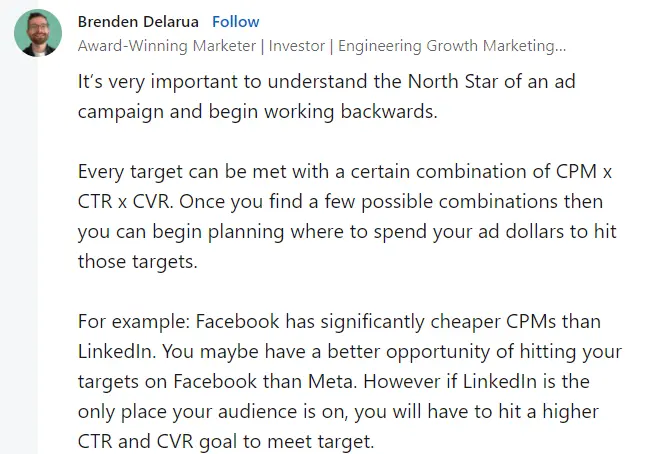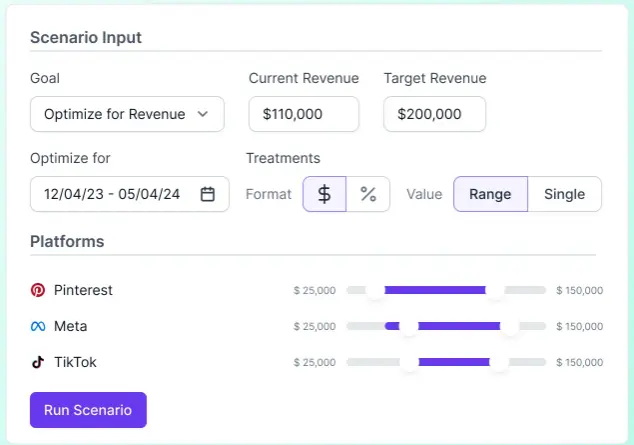Are you ready to navigate the digital ad space like an expert in 2024? Media planning is critical to your marketing arsenal, dictating how, when, and where your ads will grab attention and drive conversation. With a substantial slice of marketing budgets dedicated to paid advertising, understanding the ins and outs of media planning is helpful; it’s essential for crafting campaigns that follow your audience and stay with them.
Read on if you want to sharpen your media strategy to resonate in the ever-evolving digital landscape.
What is Media Planning?
Media planning is the strategic process of determining where, when, and how often an advertising message should be placed to achieve optimal engagement and ROI. It involves meticulous market research, setting ambitious yet achievable goals, judicious budget allocation, and selecting the perfect blend of media channels to broadcast your message.
This process is not linear but a cycle of continuous improvement driven by data and a deep understanding of consumer behavior.
The Media Planning Process
At its core, media planning starts with understanding your target audience and ends with measuring the success of your advertising efforts. Each step is interconnected, guiding you to make informed decisions that align with your marketing strategy.
1) Research and Analysis
The first step in media planning is to ensure you reach your target audience. Who are they? What are their interests, habits, and media consumption patterns? Understanding the audience is crucial because it informs every decision-making in the media planning process.
This deep dive into the audience’s world involves analyzing demographics, psychographics, and behavioral data to paint a detailed picture of the ideal customer.
The next step is to understand the landscape in which they operate. Market research provides insights into the broader trends affecting the industry, competitors, consumer behaviors, and the effectiveness of various media channels.
This dual lens of market research and competitive analysis helps identify differentiation and strategic positioning opportunities.
2) Setting Goals
In the goal-setting phase of media planning, aligning with KPIs and focusing on harnessing data for precision marketing is vital. The crux is to align marketing objectives with core business goals, moving beyond vanity metrics that may look good on paper but don’t drive business growth. At this juncture, marketing teams must step out of their silos and work in tandem with finance teams to determine which metrics are worth pursuing.
For example, a goal would be “to increase the customer acquisition rate by 20% within the next quarter through targeted multi-channel campaigns, utilizing data-driven insights to reduce the cost per acquisition by 15%.” This goal provides a quantifiable target and reflects a synergy between marketing efforts and business outcomes.
If you want to set goals at the campaign level, expert marketer Brenden Delarua recommends identifying the north star of an ad campaign and working backward.
brenden-delarua-linkedin-post-on-setting-goals
Once the campaign goals are laid out, you must align these objectives with your overall marketing strategy. For instance, if the broader marketing strategy is to establish a foothold in a new market, the media planning objectives might focus on building brand awareness and understanding within that specific demographic or geographic area.
3) Selecting the Right Media Mix
This stage is crucial for determining how to distribute your message across various channels, effectively engaging your audience, and achieving your campaign goals.
Here, you need to evaluate the plethora of available media channels thoroughly. This evaluation should consider several factors, including the channels’ reach, the demographic makeup of target audiences, the context in which your ad will appear, and the overall compatibility with your campaign objectives.
For example, social media platforms can offer targeted reach and interactive engagement for digital-savvy audiences. At the same time, traditional channels like television or print may provide broader reach and high trust levels among certain demographic groups.
Also, the choice between digital and traditional channels should align with the campaign’s goals, target audience preferences, and budget constraints, ensuring a strategic approach to media planning that maximizes the impact of both worlds.
4) Budget Allocation
In this stage, you determine how to distribute your advertising budget across various channels to maximize impact without overspending.
The allocation should reflect the priorities established during the objective-setting phase, with more resources directed towards channels that promise higher engagement and conversion rates for your specific audience.
Modern marketers run predictive MMM models to build optimal media plans with accurate forecasting. Some of the best MMM tools offer features that can help you compare different scenarios with target KPIs and instantly update budgets on ad platforms.
budget-allocation-for-platforms
5) Media Buying and Execution
The essence of media buying lies in strategically acquiring ad spaces across various channels, ensuring that every dollar spent maximizes the brand’s visibility and impact. Whether it’s securing a spot on digital platforms or traditional media like television and billboards, the art of negotiation is key.
Effective media buying demands a deep understanding of market rates, keen negotiation skills, and an eye for the ideal placement. Here’s a focused approach to master the buy:
- Leverage data for negotiation: Utilize data to understand the value of different media channels for your specific audience. Armed with this information, you can negotiate the best rates aligning with Lifesight’s KPIs, ensuring cost-effective reach and impact.
- Master the art of timing: Dive into the media landscape to identify when rates are most favorable. Planning your buys during these off-peak periods can significantly reduce costs without compromising audience reach.
- Placement precision: Placement is not just about reaching an audience; it’s about reaching the right audience in the right context. Strategize placements to align with your audience’s media consumption habits, ensuring your message resonates strongly and stands out.
- Rigorous rate review: Continuously analyze and benchmark your rates against industry standards and historical data to ensure competitive pricing for your ad placements.
6) Optimize campaigns
Crafting compelling campaigns and creatives is only part of the job. To maximize effectiveness, you must continually test and tweak various elements like keywords, ad copy, visuals, and calls to action. Regular monitoring and performance analysis are essential to understanding what resonates with your audience.
Tips to optimize campaigns and creatives:
- Employ a multi-touch attribution tool: The Modern Marketing attribution tools namely Lifesight help you understand which touchpoints contribute to conversions, enabling more efficient budget allocation.
- A/B testing: Always be testing. Whether it’s new channels, different ad formats, or unique messaging, use a portion of your budget for experiments to find untapped opportunities.
Final Thoughts
Looking toward the future, the trends in media planning are clear: the growing importance of data analytics and AI in crafting more personalized media strategies stands out. These technologies are not just buzzwords but powerful tools that can dissect vast amounts of data to reveal insights about audience behaviors, preferences, and trends.
Moreover, as consumer privacy concerns become more pronounced, adapting and innovating how we collect and utilize data will be crucial.
You may also like
Essential resources for your success


























































